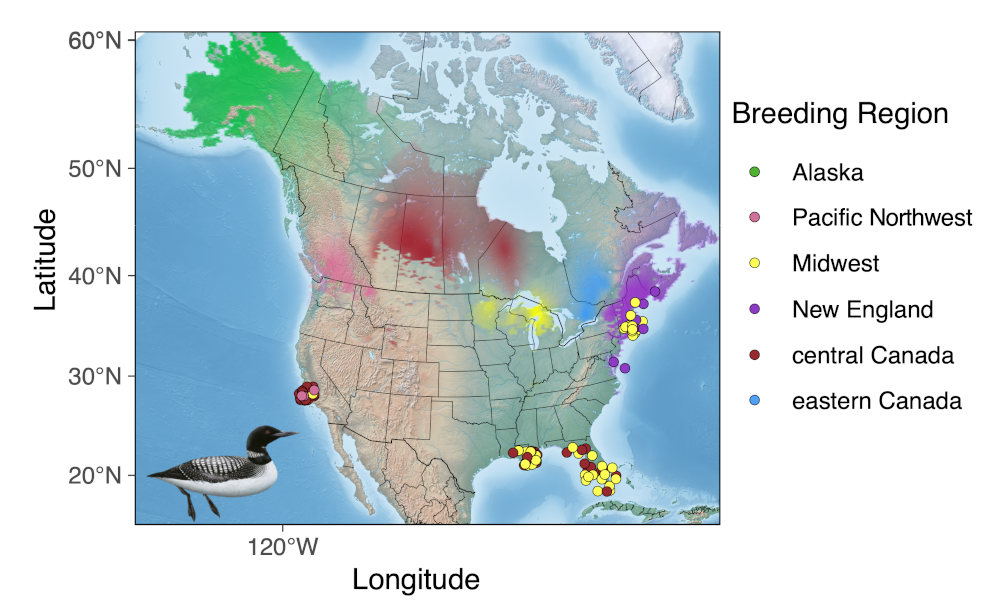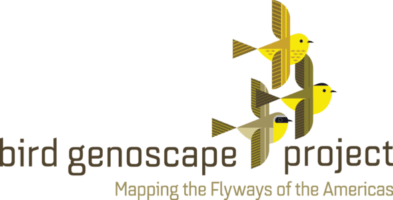Common Loon
Common Loons (Gavia immer) are highly territorial, long-lived migratory species with limited breeding territory available. Common Loons exhibit specialized morphological traits that are uniquely adapted to stealthy diving; however, this makes terrestrial movement difficult. They occupy freshwater lakes in boreal and near-arctic habitats of North America and are sensitive to human disturbance, with disappearances from several former nesting areas due to human activities on lakes in summer. Moreover, Common Loons are projected to lose much of their breeding range as a result of climate change.
We teamed up with various partners (see below) to develop high-resolution molecular markers to identify breeding populations of Common Loons in North America. We scanned the genomes of 142 individuals from 23 sampling locations across the Common Loon breeding range to identify population structure. In total, we’ve identified the existence of 6 genetically distinct populations of the Common Loon – Alaska (green), Pacific Northwest (pink), central Canada (red), Midwest (yellow), eastern Canada (blue), and New England (purple). These 6 populations can serve as the foundation for Common Loon conservation and management.

The six genetically distinct populations of Common Loon (Gavia immer) across the breeding range. Individuals sampled on the wintering grounds (colored dots) were then assigned back to their respective breeding ground genetic cluster, allowing us to better understand the migratory connectivity of Common Loon populations. The genetic cluster results were clipped to the species distribution map (eBird). Color-filled data points indicate wintering birds and their assignment to one of the breeding regions. See below for details of samples used. Common Loon Image by © Birds of the World
Read below to learn about our work constructing the Common Loon genoscape and how we used this information to track population-specific impacts from a disease outbreak:
Larison B, Lindsay AR, Bossu C, Sorenson MD, Kaplan JD, Evers DC, Paruk J, DaCosta JM, and TB Smith. 2020. Leveraging genomics to understand threats in a migratory waterfowl. Evolutionary Applications 14: 1646-1658
Click the following link for access to the sequencing data:
The following individuals were instrumental in the development of the genoscape manuscript:
Brenda Larson, Center for Tropical Research
Alec R. Lindsay, Northern Michigan University
Michael D. Sorenson, Boston University
Joseph D. Kaplan, Common Coast Research and Conservation
David C. Evers, Biodiversity Research Institute
James Paruk, Saint Joseph’s College
Jeffrey M. DaCosta, Boston College
The following individuals & groups contributed samples, equipment, or laboratory space to help develop the genoscape:
R. Harrigan, UCLA
Utilized Common Loon Samples
Explore the map below to see when, where, and who collected the samples to build the genoscape.
